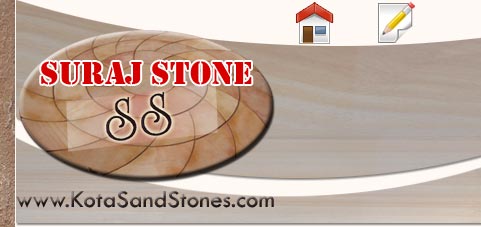
| Profile | Photo Gallery | Enquiry | Contact Us |

| |||||
| |||||
|
:: Limestone ::
Limestone is partially soluble, especially in acid, and therefore forms many erosional landforms. These include limestone pavements, pot holes, cenotes, caves and gorges. Such erosion landscapes are known as karsts. Limestone is less resistant than most igneous rocks, but more resistant than most other sedimentary rocks. Limestone is therefore usually associated with hills and downland and occurs in regions with other sedimentary rocks, typically clays. Kota Stone Kota Stone is a fine-grained variety of limestone, quarried at Kota district, Rajasthan, India. Many hundreds of mines are located in or near the town of Ramganj mandi and kota district. Kota Stone is famous for its low price and beautiful colors. The rich greenish-blue and brown colours of this stone are most popular. It is an excellent building stone. It is mainly used for Exteriors, Pathways, Corridors, Driveways, Balconies, Commercial buildings etc. It is also suitable for use in chemical industries as flooring, wall fixing & lining. People like Kota stones due to its charming appearance and long life. Kota stone is preferred for flooring and wall cladding, paving and facades of buildings. They are very tough, non water-absorbent, non-slip, non-porous and have excellent stain removability. Moreover, their resistance to wear and delimitation is higher than other stones. Both Kota Blue & Brown are extremely versatile limestone’s and can be well honed, polished, sandblasted, brushed & tumbled. Hence they can be supplied in a variety of finishes. Polishing: Polishing brings the shine and smoothness to the surface of stone after cutting into pieces of different sizes and thickness.
Benefits
Other uses of Limestone:
|
| Site Developed, Hosted by JainaSoft Technologies |